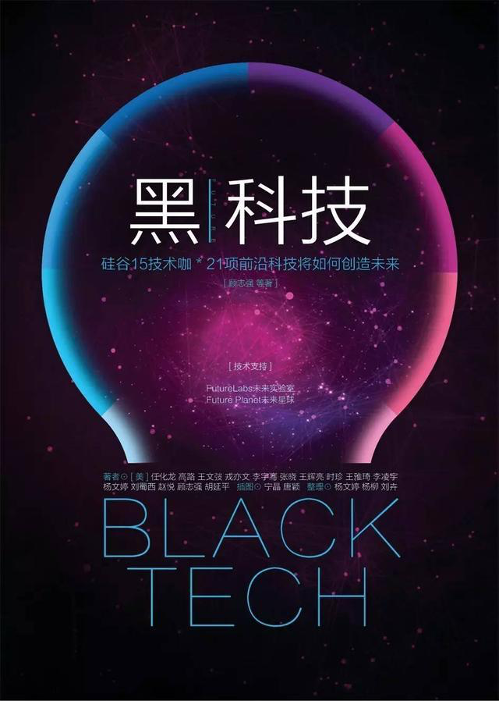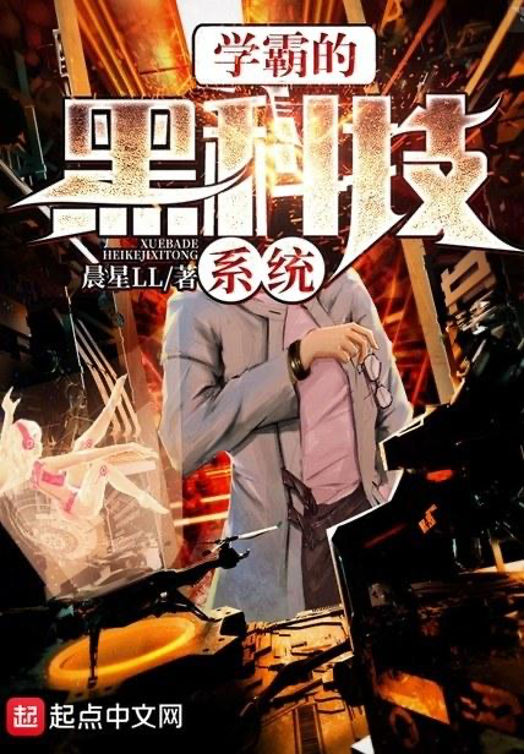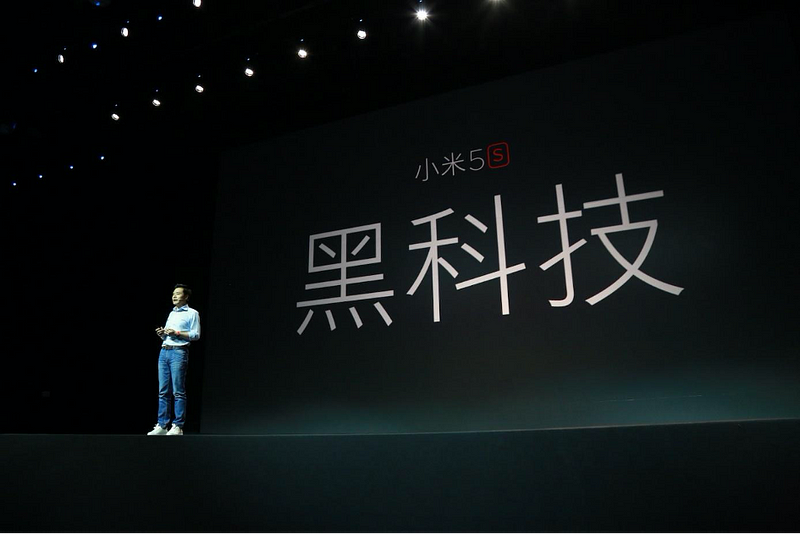
Opacity and incomprehensibility in Chinese innovation
A guest post by Gabriele de Seta. Gabriele is technically a sociologist and currently a Postdoctoral Researcher at the University of Bergen.
This essay is part of our ongoing “AI Lexicon” project, a call for contributions to generate alternate narratives, positionalities, and understandings to the better known and widely circulated ways of talking about AI.
就在陆舟为自己的处境开始感到焦虑的时候,忽然一面半透明的屏幕,突兀地浮现在他面前,把他整个人给吓得往后一跳。
“黑科技……系统?什么鬼?!”
Just when Lu Zhou started feeling anxious about his predicament, a semi-transparent screen suddenly appeared in front of him, scaring him away.
“Black technology… system? What the hell?!”
— 晨星LL / Morning Star LL
The words we use when talking about technology play a key role in the articulation of both imaginaries and critiques: what is intelligence, and how can it be ‘artificial’? What does it mean for a city or an object to be ‘smart’? How do machines ‘learn’? Shaped by the hegemony of English as the lingua franca of academic research and tech industries, the lexicon through which we understand computation and automation appears to be remarkably homogeneous on a global scale. And yet, appropriations and translations of specific terms in local contexts and languages challenge and reconfigure how these technologies are hyped and demystified. For example, around the mid-2010s a new term started appearing in Chinese tech discussions, evoking both hype and mystery: heikeji 黑科技, which can be literally translated as ‘black technology.’ In China, heikeji was being used to describe both technologies readily available in existing commercial products (e.g., machine learning) as well as futuristic technologies only portrayed in science fiction narratives (e.g., warp drives). The combination of the color black (hei 黑) and the broad category of technology (keji 科技) allowed this neologism to encompass a wide range of innovations from face recognition and drones to teleportation and quantum computing.¹
As Mireille Hildebrandt notes, broad and undefined descriptors such as ‘smart’ help tech companies “getting away with even bolder claims about their added value” (2020, p. 4); a term like heikeji, with its blurry boundaries and vague promises, is a textbook example of how AI products are peddled as high-tech ‘snake oil’ through pseudoscience and dubious appeals to depth. At the same time, the novelty and opacity of heikeji offers the opportunity to trace how technologies are mystified and how increasingly untenable myths about them are then questioned. By combining a generalized futuristic provenance and technical incomprehensibility, heikeji pointed towards a promising path of national innovation leapfrogging and profitable advancements in global competitiveness, but also to the threatening shadow cast by opaque technical systems to come. Recognizing the cultural impact of the term, a 2018 report by the National Language and Writing Committee dedicated an entire chapter to heikeji, probing its etymology and proposing a general definition: heikeji refers, at the same time, to “conceptual technologies that are currently difficult to realize but may be realized in the future,” and to “high-precision technologies and products that have been realized but surpass the understanding of most people” (Zhang, 2018).

In popular parlance, heikeji found its fortune next to similar buzzwords such as ‘smart’ or ‘green’ technologies, offering a vague enough descriptor for promotional materials, industry news, or tech forecasts. Heikeji was everywhere, and everything could be Heikeji. As April Ma explains in one of the few English-language discussions of this term:
“if your technology is described as “black” in China … consider it one of the highest compliments you can attain in the tech world … a term reserved for only the most mind-boggling, futuristic, and out-of-this-world scientific feats.” (Ma, 2016)
In order to understand the pull of this neologism, it is useful to frame it in the wide range of connotations that the color black has in Chinese. Besides its more direct correlation with darkness and unknowability, black is used in compounds related to secrecy (heihua 黑话, ‘jargon’ or heishi 黑市 ‘black market’) and shadiness (heiche 黑车, or ‘black car,’ for unlicensed taxis and heishehui 黑社会, ‘black society,’ for mafia); to have a ‘black heart’ is to be sinister or evil; as a verb, hei 黑 can mean vilifying and slandering other (especially online), and it is perhaps not a coincidence that the Chinese term for ‘hacker’ is heike 黑客, or ‘black guest.’
While heikeji resonates with the threatening obscurity of unofficial and secretive technologies, its connotation of unknowability and opacity is perhaps closer to the concept of ‘black box’ in cybernetics and information theory. And yet, the origin of this term is much more recent, and comes from a more mundane source: Japanese anime, comics and games (ACG) fandom. The term ‘black technology’ was popularized by Full Metal Panic!, a series of light novels by author Shoji Gatoh serialized between 1998 and 2011. These have since been adapted into multiple series of anime and manga, as well as full-length movies and videogames. In Full Metal Panic!, ‘Black Technology’ refers to discoveries and innovations well beyond present human knowledge, which are mysteriously understood by a category of human beings called ‘Whispered.’ Oscillating between light-hearted comedy and sci-fi mecha action, this series focuses on members of a military organization trying to protect a high-school girl who happens to be a Whispered from terrorist groups seeking to obtain Black Technology.

In Full Metal Panic!, the Black Technology varies from massive humanoid combat robots to artificial intelligence, invisibility cloaking, energy sensors, palladium reactors, and monomolecular cutting blades (Fandom contributors, 2020). It is likely that the term Black Technology was translated into Chinese as heikeji by local fans of Japanese ACG; from subtitles and comic book dialogues, it seeped into everyday jargon, testifying to the unpredictable discursive loops connecting science-fictional narratives and tech industry imaginaries. The long and detailed heikejientry on the Baidu Baike wiki notes how the original meaning of black technology emphasizes its incomprehensibility to contemporary humans — innovations so far into the future that they appear not to have scientific basis or to even go against established principles of physics. The term gradually expanded to indicate new kinds of software, hardware, techniques and materials that elicit a reaction of bu ming jue li 不明觉厉 — another online jargon term which, roughly translated, means ‘I do not understand, but I think it’s cool’ (Baidu Baike contributors, 2020).
Heikeji, in short, came to indicate futuristic developments and opaque innovations — any technology characterized by a novelty yet to be fully grasped, harboring both promise and threat. Playing on the ambiguity of the term, in 2015 tech reporting magazine Keke launched a weekly series of short videos called Heikeji, dedicated to gossip and grievances about tech companies including Microsoft, Nokia, Apple, and Nintendo; similarly, the Zui hei keji website collects industry news in partnership with the major Chinese tech giants. With a more futuristic bent, Gu Zhiqiang’s 2017 edited volume Heikeji (English title: Black Tech) collects essays by fifteen Chinese entrepreneurs, researchers and engineers working in Silicon Valley, each of them explaining “cutting-edge technologies that will change our lives in the future” including automated sensors, new materials, genetic engineering, neuroscience, levitation, holograms, smart dust, and deep learning. Oscillating between vague fabulations about the latest hypes peddled by contemporary tech industries and speculative visions of their future development, heikeji encompasses any technology that is still not completely understood and hence remains unpredictable, an umbrella term that promises foresight into the innovations likely to tip the scales of sociotechnical change.

The more science-fictional understanding of heikeji — closer to its depiction in Full Metal Panic! as technological innovations sent back in time from a future civilization — has also been picked up by Chinese authors, particularly in the massive market of online literature. Xueba de Heikeji Xitong 学霸的黑科技系统 (The Top Student’s Black Technology System), written by author Morning Star LL, follows the adventures of university freshman Lu Zhou after he runs into a “black technology system” created by a high-level civilization. Over its hundreds of chapters, Lu Zhou levels up in the system, unlocking scientific achievements, solving global crises, establishing off-world colonies and eventually unraveling the mysteries of the universe (Chenxing LL, 2018). In narratives like this, heikeji describes something far beyond the rumored features of next-generation smartphones or the impact of automation on e-commerce, and combines fantasies of technological leapfrogging with the logics of role-playing videogames and the pressures of China’s higher education system. In contrast to contemporary demands for accountability and explainability in AI and automation (Linardatos et al. 2021), heikeji’s incomprehensibility requires the heroic dedication and gamified efforts of a brilliant student in order to unlock even a small percentage of its power.
The science-fictional, techno-utopian imaginaries of heikeji only reinforce its usefulness for patriotic narratives: if this technology existed, China might in fact have already achieved it. In 2017, a Global Times article argued precisely that “the Chinese heikeji you are already used to has trailed ahead of foreign countries for at least a decade,” and that it was time for people to take stock of China’s technological prowess (2017). As a proof, the reporters compared the achievements of Chinese tech companies in smart logistics to the backwardness of their global competitors, concluding that drones, delivery vehicles, and automated warehouses cemented China’s leadership in science and technology. News outlets and industry fairs compiled yearly rankings and assigned awards to the most promising national champions: a heikeji Top 10 released during the 2017 China International Big Data Expo in Guiyang listed flexible displays, augmented reality, lip-reading systems, and human-machine emotional interface as among its picks (Chen, 2017); similarly, the Top 30 compiled by IPR Daily in 2018 framed heikeji as the real “light of China” leading the country’s acceleration as it catches up with, and hopefully surpasses, its main competitor — the United States (Qing, 2018).

Heikeji also prompted skepticism and critical evaluations of its actual import on technological development. The same National Language and Writing Committee report that traced the term’s origin also warned about “pseudo-black technologies” relying on the neologism’s popularity to repackage existing products with no innovative breakthroughs of note — just like mundane objects like power banks and electric scooters had been marketed as ‘smart technologies,’ wristwatches and infrared sensors were now being sold as heikeji devices (Zhang, 2018). In mid-2020, an article on the tech news website 36Kr questioned if black technologies had arrived at all, and evaluated the prospects for industry innovation in the post-pandemic economic slump: taking flying cars as an example of a technology chiefly existing in science fiction narratives and yet regularly rehashed by automotive companies, it concluded that heikeji are “like waves in the long river of history, pushing the times forward” and destined to bring social change at some point (Li, 2020). Heikeji might prove to be a short-lived buzzword in the rapidly shifting landscape of the Chinese tech industry, or it might stick around like the omnipresent ‘smart’ descriptor. Regardless of its future, as an ambiguous signifier oscillating between near-future developments and science-fictional innovation, the trajectory of heikejiepitomizes the imaginaries through which computation and automation have been envisioned and narrativized during the past decade in China.
Footnotes:
[1] The English translation of heikeji as ‘black tech’ or ‘black technology’ overlaps with similar locutions used across global contexts to describe research, activist and organizational work dedicated to the intersection of technology, blackness, and race. In the Chinese term, the color ‘black’ does not refer to race or ethnicity but to overtones of unknowability, shadiness and secrecy.
References:
Baidu Baike contributors. (2020). Heikeji 黑科技 [Black technology]. In Baidu Baike.
Chen, Meijing. (2017, May 28). Top ten black technologies list revealed. China Daily.
Chenxing LL. (2018). Xueba de heikeji xitong 学霸的黑科技系统 [The top student’s black technology system]. Qidian.
Fandom contributors. (2020). Black Technology. Full Metal Panic! Wiki.
Global Times. (2017, October 11). Ni mei ri jianguan de Zhongguo heikeji, jing yi lingxian guowai zhishao 10 nian 你每日见惯的中国黑科技,竟已领先国外至少10年 [The Chinese black technologies you get used to every day have been ahead of foreign countries for at least 10 years]. Bajiahao.
Gu, Zhiqiang. (Ed.). (2017). Heikeji: Guigu 15 wei jishu ka x 21 xiang qianyan keji jiang ruhe chuangzao weilai 黑科技:硅谷15位技术咖x 21项前沿科技将如何创造未来 [Black tech: 15 Silicon Valley tech leaders on how 21 cutting-edge technologies will create the future]. China Friendship Publishing Company.
Hildebrandt, Mireille. (2020). Smart technologies. Internet Policy Review, 9(4).
Linardatos, Pantelis et al. (2021). Explainable AI: A review of machine learning interpretability methods. Entropy 23(18).
Li, Jinlin. (2020, August 5). 2020 nian guoban, zhexie heikeji zhende laile? 2020年过半,这些黑科技真的来了? [It’s the middle of 2020, have these black technologies really arrived?]. 36Kr.
Ma, April. (2016, September 21). There’s nothing dark or evil about “black technology” [Lost In translation]. TechNode.
Qing, Jia. (2018). Zhongguo zhi guang! Zhongguo zui ku heikeji 30 qiang mingdan gongbu! 中国之光!中国最酷黑科技30强名单公布! [The light of China! List of China’s top 30 coolest black technologies has been announced!]. IPR Daily.
Zhang, Gailun. (2018, May 30). “Heikeji” jiujing shi shenme “hei” “黑科技”究竟是什么“黑” [What kind of “black” is “black technology” exactly?]. Xinhuawang.





